Does gravel stop being gravel if you enter a cyclocross race? Gravel Alliance rider Erwin Sikkens set off from the Netherlands to ride to Yorkshire to compete in the Three Peaks Cyclocross on his gravel bike. Along the way, he found himself questioning what gravel really is.
There have been many definitions of gravel, varying from anything like a specific type of road with loose pounded stones, all the way to ‘it’s a culture’. Even the fact that gravel riding is a type of off-road riding is sometimes up for debate, because let’s face it, gravel bikes are the perfect all-round type of bicycles that can also be used perfectly well on paved roads. So, what is gravel? And when does it stop being gravel? I was going to make answering this question a little bit more complicated - or interesting to say the least – by riding the infamous Three Peaks Cyclo-Cross in the Yorkshire Dales.

Obviously, as a gravel-type person, I was going to do it on my gravel bike. To make things even more fun, I was going to bikepack my way to and from the start – gravel style.
British gravel is boggy
At home in the Netherlands, we have healthy discussions about the definition of gravel on a regular basis. Most agree it’s a culture of all-round off-road riding in nature, translating into riding mostly hardpacked sandy roads in the countryside and double-track fire roads in the forests.
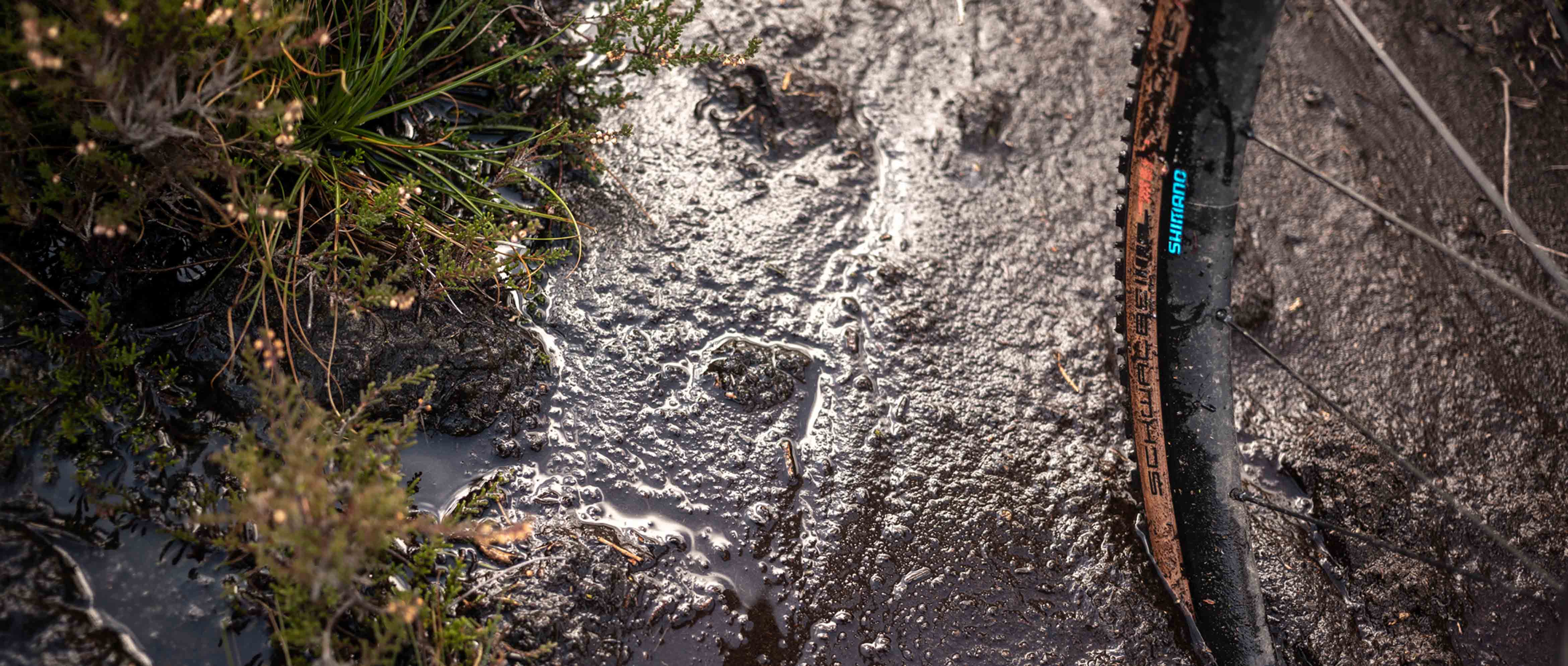
When we open komoot in the Netherlands, we’ll look for the broad roads with dotted outlines on the map. Nine out of ten times you’ll find some proper Dutch ‘gravel’ there. When planning my bikepacking route from Newcastle to the Yorkshire Dales, I used the same logic. The outcome, however, was more surprising. Whereas the first off-road sections in the North Pennines were beautiful forest tracks that were perfectly ridable, I soon bumped into the first challenges. None of it was helped by the fact that I was riding 33-mm tyres for the CX-race to come, but boggy singletracks up on the moors hardly count as gravel in my eyes. Still, I was, despite some hiking, sort of tackling it on a gravel bike.

After that first muddy hike through a beautiful landscape, it never stopped being beautiful and interesting. Beautiful rolling hardpack gravel roads through the moors which sometimes gave way to sudden steep climbs that stopped me in my tracks.
Despite the at-times textbook gravel terrain, riding up 20% gradients with a fully loaded bike is not for the faint of heart. Descents were often technical but doable, although it would have been better on 45-mm tyres. The real fun, however, started the further inland I got.
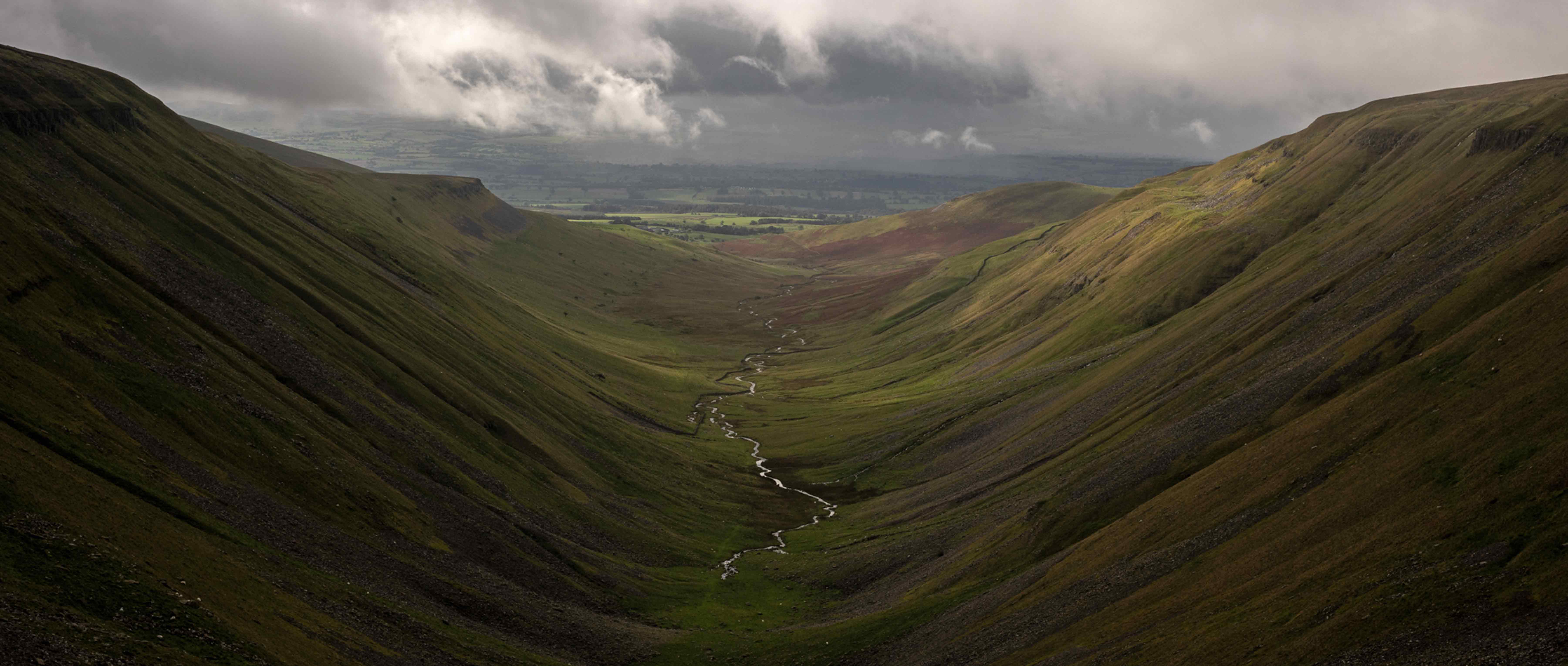
British gravel is slow
The second day led me up High Cup Nick, a beautiful valley that can only be reached via a small black line on the map. In hindsight, there were probably better routes available to the start of the race, but with my Dutch komoot logic, I didn’t question it. Besides that, I had heard a great deal about the beauty of this spot. The ride to High Cup Nick started with an easy asphalt climb up to a reservoir, where the road soon turned into proper gravel. I rode this beautiful gravel road for many kilometres, until my Wahoo started beeping out of nowhere.
Wrong turn? What wrong turn? Not visible to the human eye, apparently I had missed a small track hidden in the grass.

The route to High Cup Nick had taken an adventurous turn and I briefly counted myself lucky that I was almost there. On paper, anyway. The last two or three kilometres to the viewing point took forever. What looked like ‘technical gravel’ on the map was in real life a boggy and rocky singletrack following a creek. Some parts were rideable, but most were not. I finally reached High Cup Nick at two in the afternoon. I had planned to be there at lunchtime. Despite the delay, I enjoyed that view massively, but also knew I was going to have to make up for the time lost in the descent. No problem right?
How naive can a person be…

British gravel is cutting sidewalls
The so-called descent took forever to reach. I had somehow overlooked the big high plain to be tackled before I could make my way down. However beautiful that place was, there was no gravel to be found. For many kilometres in a row I ploughed my way through high grass, only to cut open my tyre on a hidden rock. More delays. The weather chose to take a turn for the worse at that exact moment and I fixed the tyre in the rain. An oddly enjoyable moment, especially for the observer.
At least I was getting the adventure that I’d hoped for. Finally, down in the valley, I grabbed a sandwich. I still had far to go and I hoped to tick off some speedier kilometres now.
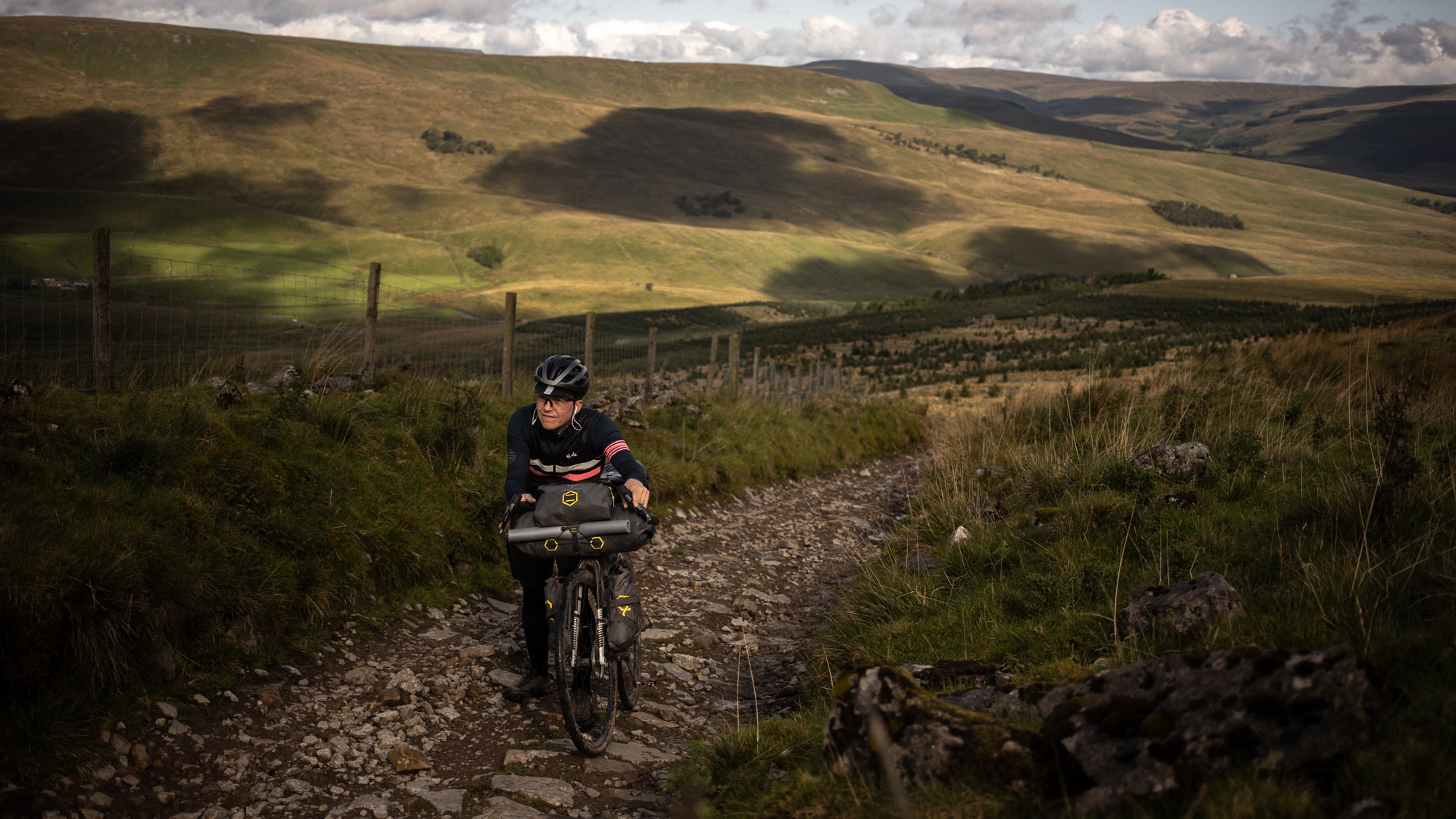
But even in the almost-flat-but-slightly-rolling hills of Westmorland, gravel didn’t seem to exist. The off-road sections that I added to my route showed up on komoot as part of the Great North Trail, but still turned out to be a collection of non-gravel tracks through grass or sometimes just muddy meadows, alternating with often flooded double-tracks or sheep-shit-covered gravel roads. Sounds bad, but it was beautiful and fun. What it wasn’t? Fast rolling. Getting in the distance took me so long that at the end of the day, I had to acknowledge that I wasn’t going to make it to the start of the Three Peaks Race that day. Keeping it safe, I diverted to the only nearby hotel with a room available.
British gravel is something you get used to.
Early the next morning I was wide awake. Literally and figuratively. I could visualise what the roads and tracks ahead were likely to look like and I knew how different they were likely to be compared with any other gravel riding I had previously experienced.
While hiking up the last climb in between me and my goal, doubts crept in about the whole trip. Can I still call this a gravel ride? And if not, then what is gravel riding? Each moment of doubt was bookended by actual gravel roads, only to once again be surprised by the slow-rolling terrain that followed. I got used to this wild variation and slowly continued onwards to Helwith Bridge, where the Three Peaks Cyclo-Cross race would start the next day.
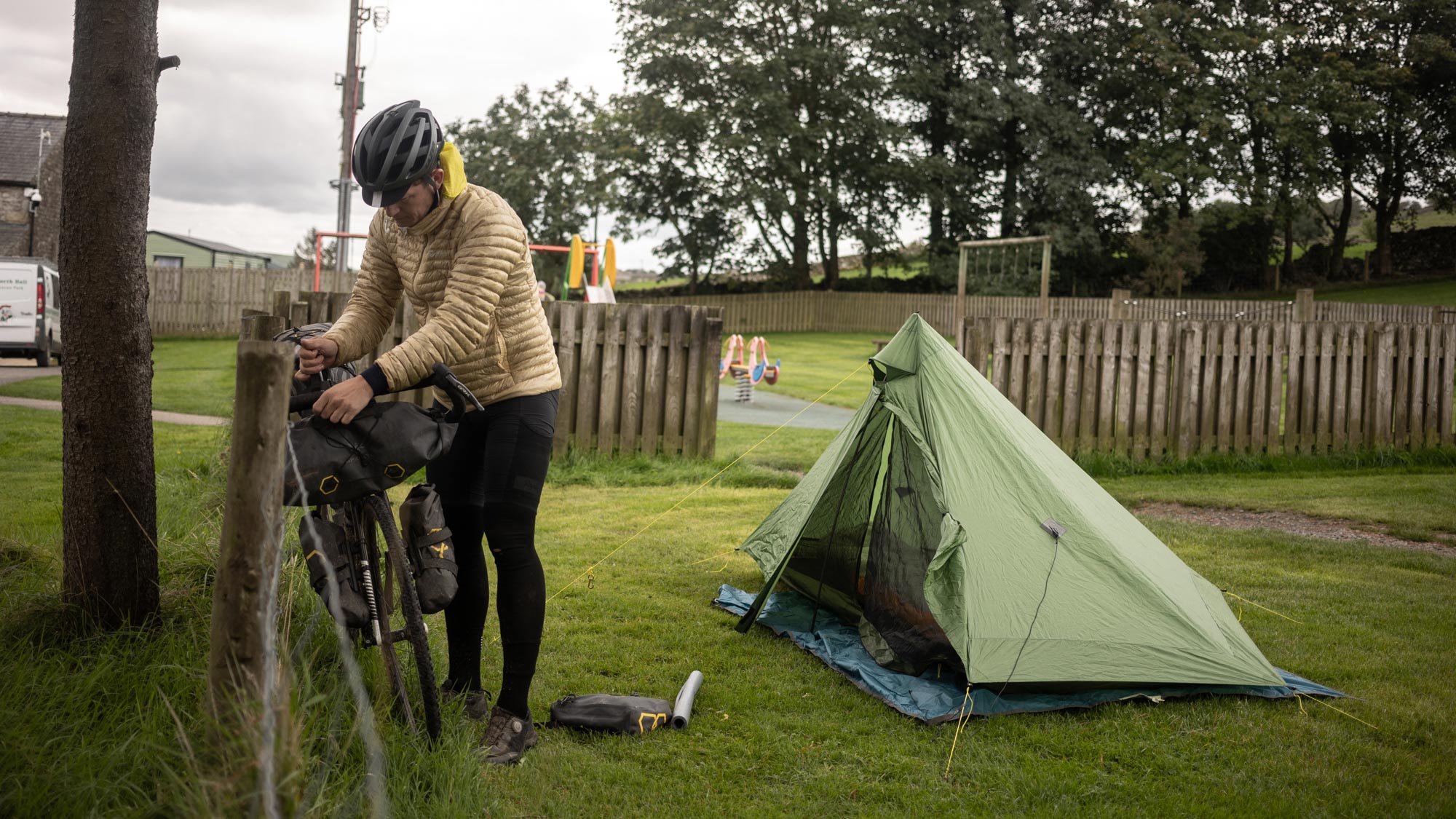
Upon arrival I was happy, but also slightly worried about my fatigue. I’d loved every moment of the trip so far, but had I tired myself? These were thoughts that constantly occupied my mind while I was unloading my bike, setting up my tent and preparing my bike for the CX race to come.
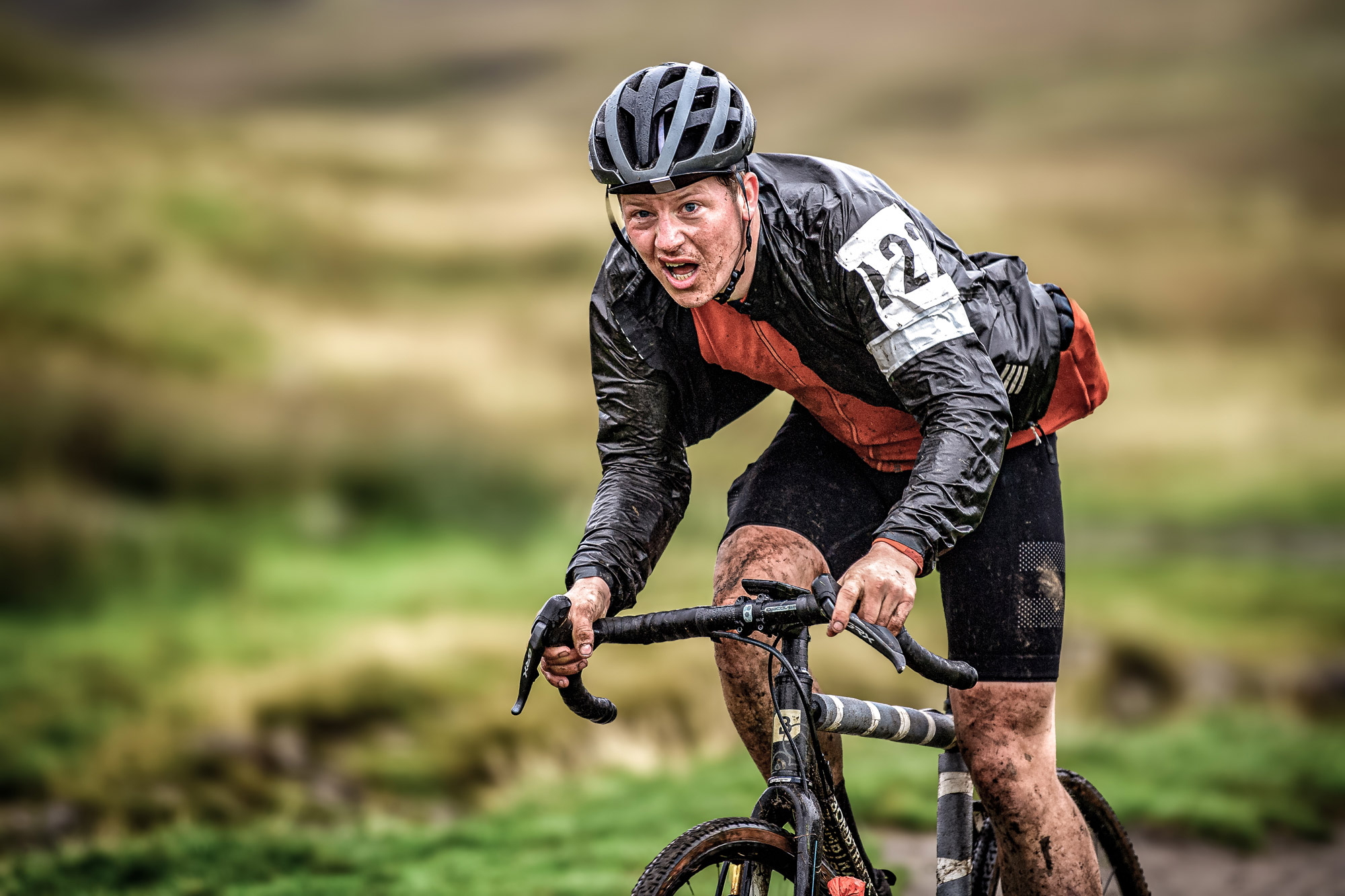
Image courtesy of Darren Athersmith
British gravel is… cyclo-cross?
The race takes place annually in the Yorkshire Dales National Park in the UK, where it has been organised since the early 60s. The goal is to cycle a hiking route, tackling terrain where even those without a bike sometimes struggle. Those competing need to conquer three Yorkshire peaks – Inglebrough, Whernside, and Pen-y-ghent – on their bicycles. Since it’s a cyclo-cross race, bikes are held to cyclo-cross rules, meaning mountainbikes are not allowed, nor is any kind of suspension, or drop bars wider than 44-mm, or tyres over 35-mm.
If you take all of these things into consideration, you can ride on your gravel bike, as long as you ditch those lovely 40 to 47-mm wide tyres and replace them with skinnier ones. The uphills are really steep and mostly unrideable. The grassy climb named Simon Fell, leading up to the first peak, is known to be over 41% at its steepest. This is not only unrideable, it’s almost unhikeable.
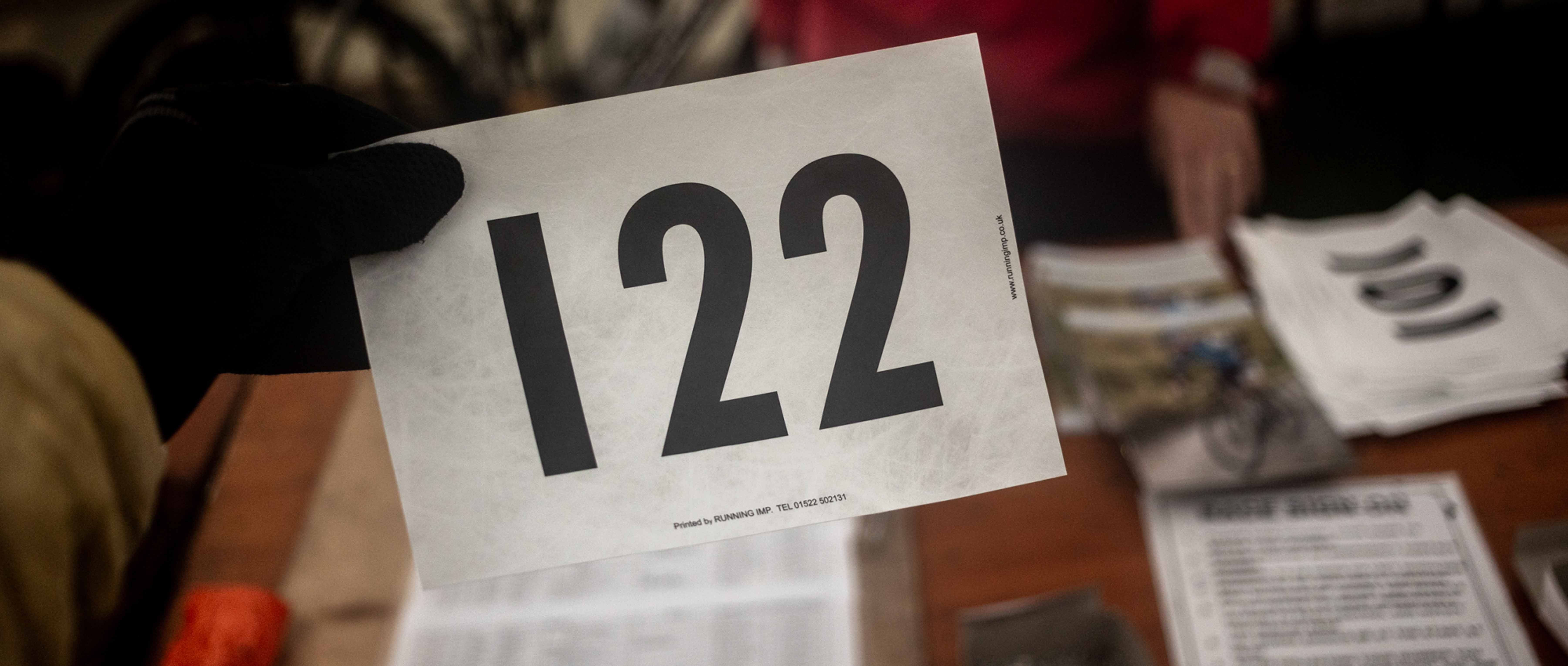
I won’t go into too many details about the race itself. It’s amazingly fun for those crazy enough like myself. It’s pure cult and has little to do with any other cyclo-cross race in the world. It’d be more apt to call it a ‘challenge’, rather than a cyclo-cross race. There’s a Frankenstein feel given the hours of hike-a-bike up steep hills, mountainbike-like technical descents combined with asphalt and gravelly roads that link the peaks together. It’s everything and nothing at the same time.
When all-round riding is pushed to its limits, the Three Peaks is what you get.
Come to think of it, ditching your CX bike and riding your preferred all-rounder is not such a bad idea after all. Similarities to some of the riding I had encountered on the days leading up to the event could not be ignored.
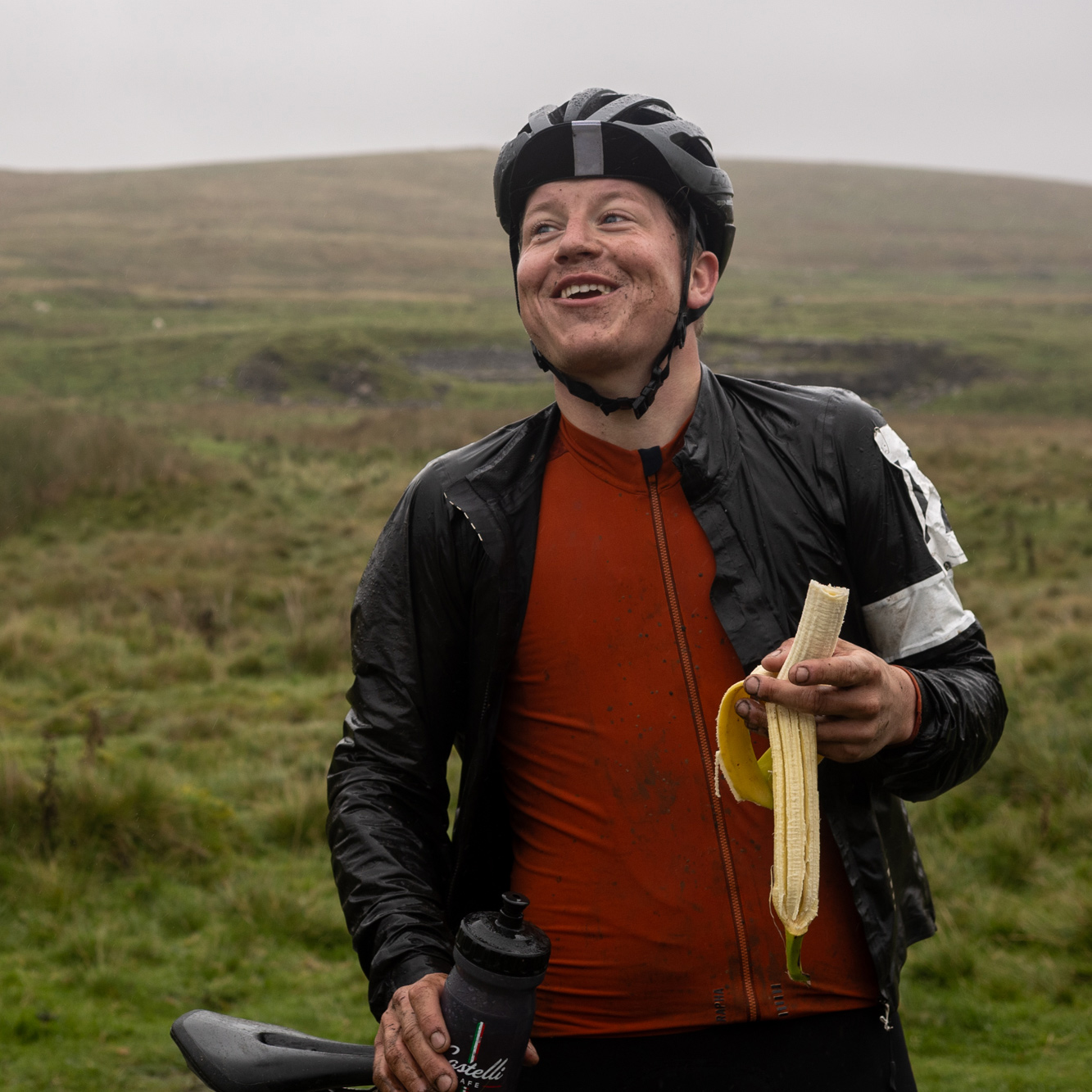
So, in today’s terms, can you call the Three Peaks event a gravel event? No, obviously not. But me and others like me have shown you can do it on gravel bike. The best proof of that is the fact I loved every minute of the race without any prior CX experience. And my gravel bike held up perfectly.
(British) gravel is one big question mark
Before I dive into any conclusions about (British) gravel, I want to point out that combining a multi-day bikepacking trip with the toughest cyclo-cross race in the world is not the smartest idea I’ve ever had. Especially not when you factor in a two-day rush to get back for the return ferry.
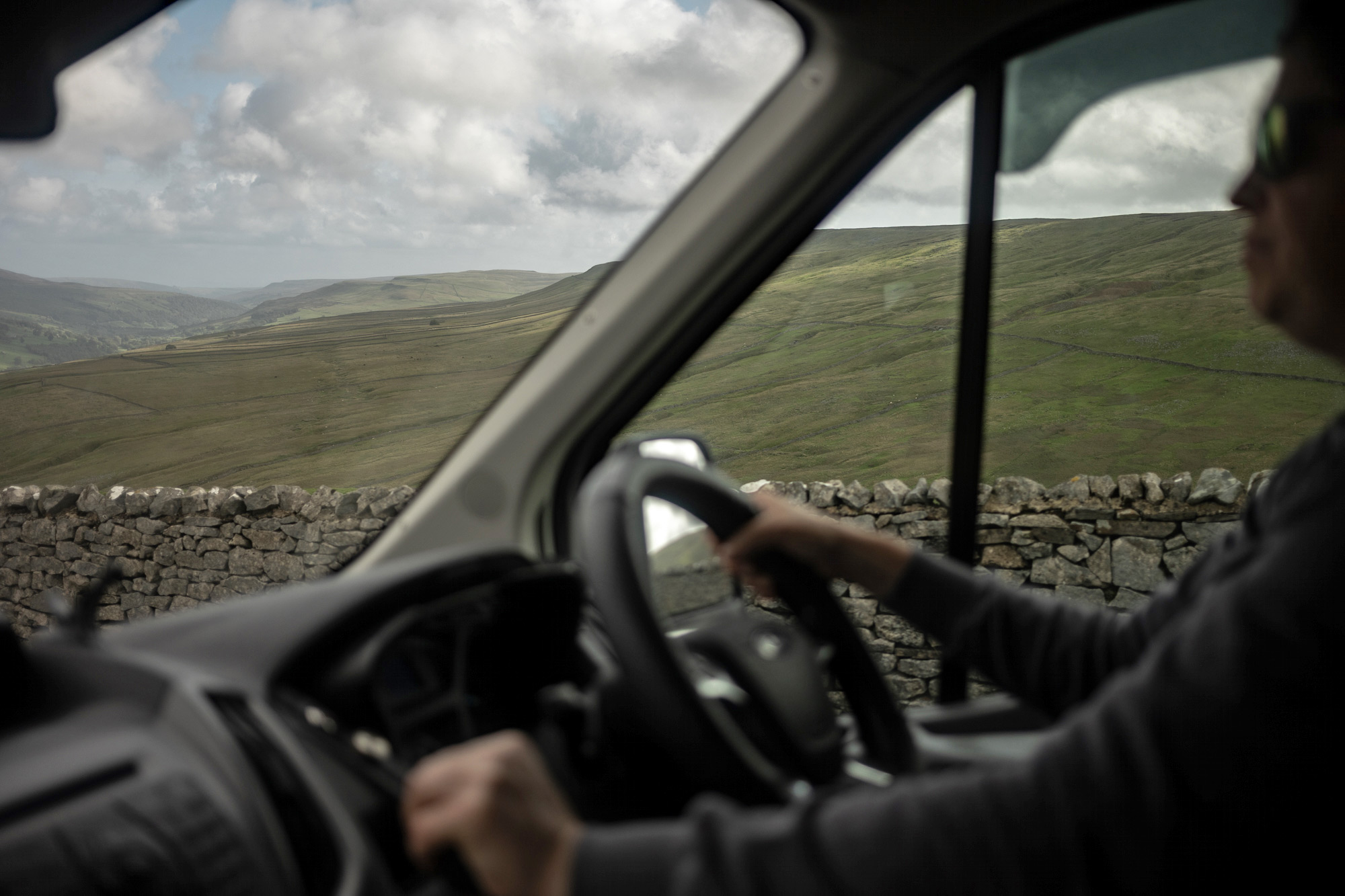
Fortunately, having been offered a lift over the first two mountains the next day from a friend called Emma and her campervan, I was able to then party-pace my way across to Newcastle to catch the ferry home.
Learning from my mistakes and feeling my legs, I altered the route. This time, I favoured tarmac over any potential hike-a-bike sections so that I could reach Newcastle in a timely fashion and enjoy the ride. All the while, I was trying to answer the question lingering in my mind - what did I just do and was it gravel?
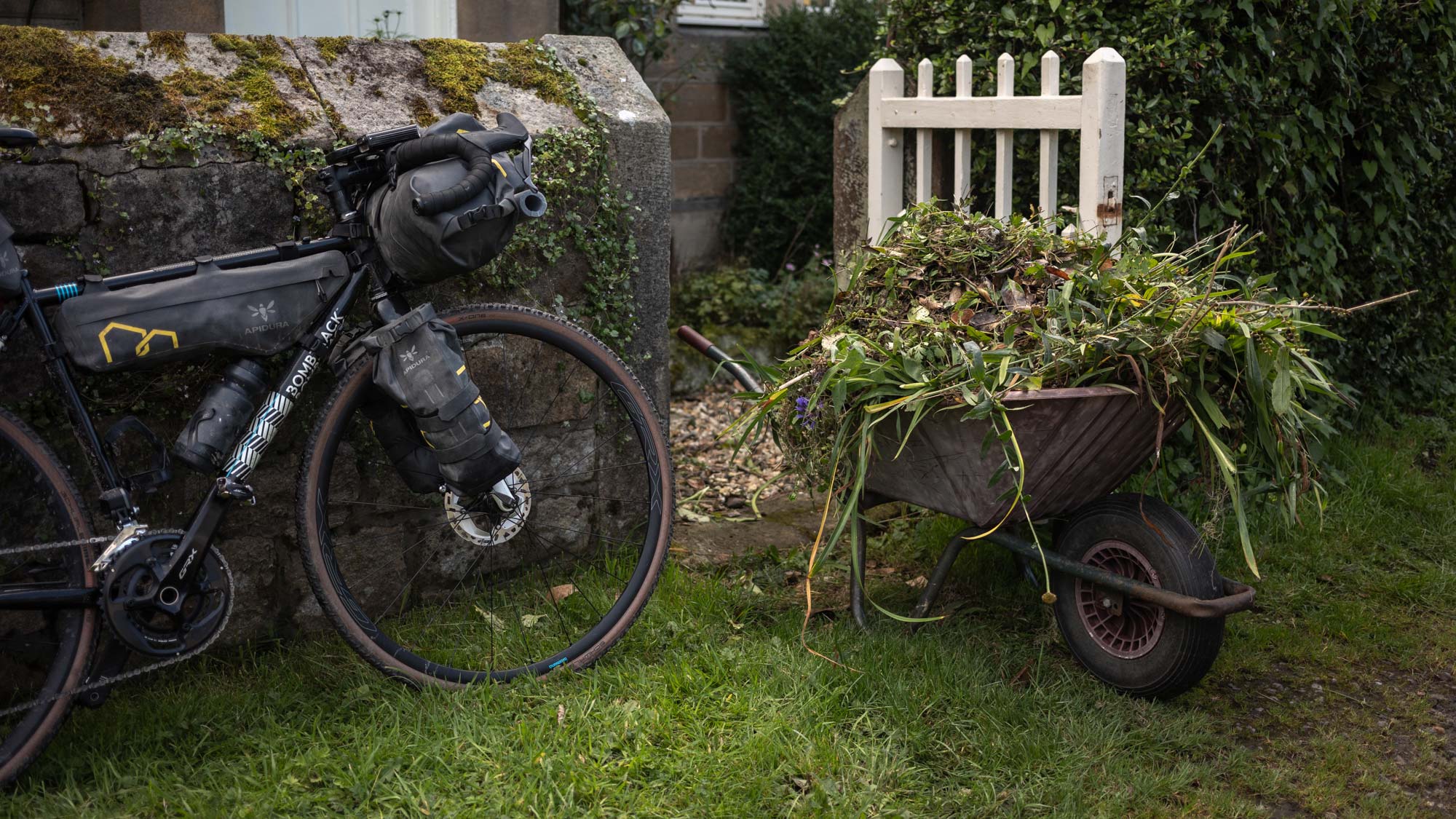
This whole experience got me wondering about the differences between cyclo-cross, gravel and mountain biking. Three Peaks can be any or all of the above with good reason. It’s off-road and I did it on my steel gravel bike with Shimano GRX Di2 components and skinny tyres. Doesn’t that make it gravel?
For a long time, off-road cycling has been ‘somewhat’ clearly defined. You had cyclo-cross and then somewhere in the 80s, mountainbikes were invented. The difference between them was as clear as night and day. Gravel, however, has reshuffled the deck. It turned off-road riding into a grey area and even fuses off-road riding with on-road riding.

On my journey through beautiful England, I rode a lot of stuff that I would never call gravel, but I would still define the ride in total as a gravel ride. One thing’s for sure, gravel is different everywhere you go. There are probably a lot of people out there who would disagree with me when I say that my trip was all about “gravel riding” and that’s fine. It’s also exactly how I would like to conclude this crazy search - by not giving a clear definition of gravel.
Nobody can do that.
What we can probably all agree on, is that whatever this crazy thing called gravel is… it’s pretty cool, never boring, often adventurous and above all, it can be anything you want it to be.
If you'd like to follow in Erwin's tyre tracks you can find his route here:
All images courtesy of Erwin Sikkens except where credited.